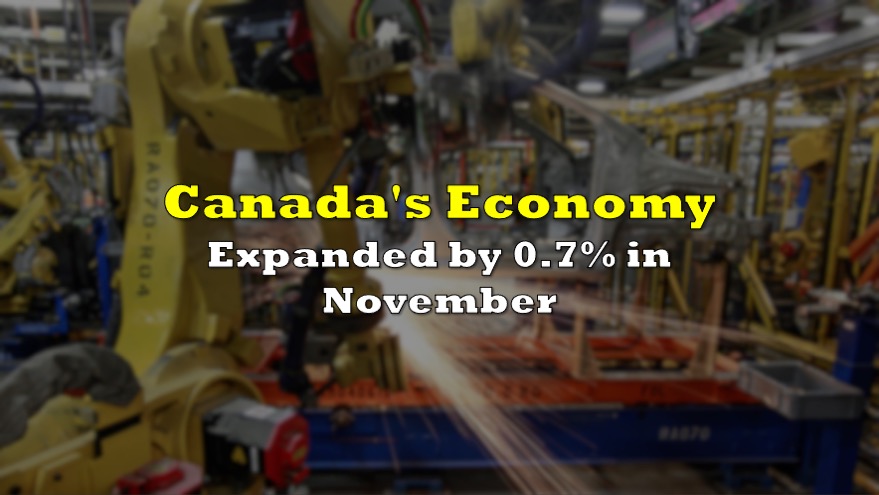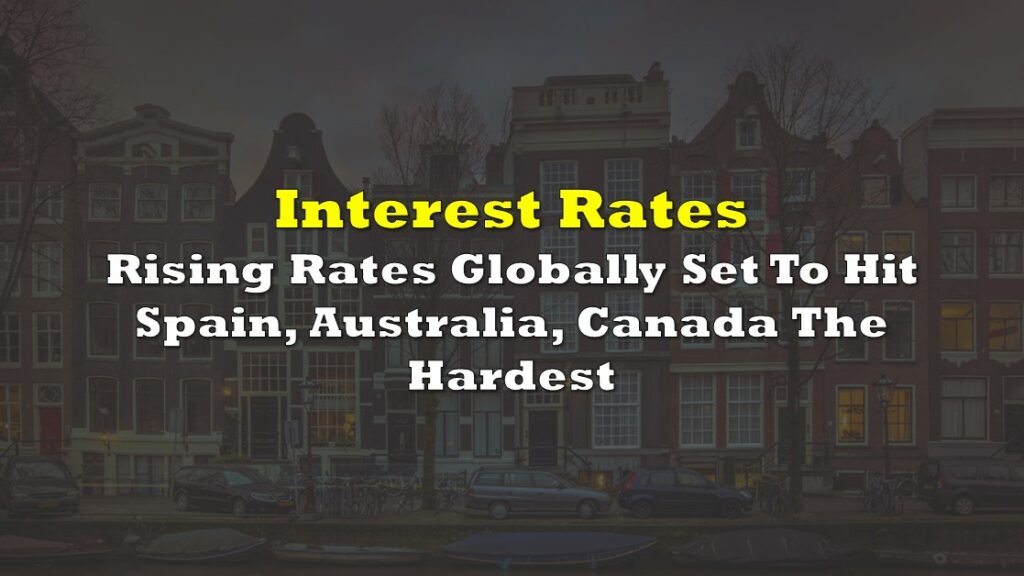Following a 0.4% increase in October, Canada’s GDP level expanded by another 0.7% in November, amounting to the seventh consecutive monthly gain after what was the largest economic contraction on record in March and April of 2020.

According to latest data released by Statistics Canada, the rise in economic activity for the month of November contributed to a positive increase for the country’s GDP, which still remains 3% below pre-pandemic levels recorded in February. Both the services-producing and goods-producing industries recorded gains of 0.5% and 1.2%, respectively, while 14 of the 20 sectors all posted increases in November.

The mining, quarrying, and oil and gas extraction sector rose by 3.9%, as three of its subcategories posted gains in November. Following an increase in foreign demand, non-metallic mineral mining and quarrying soared by 13.9%, largely due to an increase of of 26.7% in potash extraction. Metal ore mining also posted a jump in November, due to a rise in iron ore and gold and silver mining of 3.4%, and 1.4%, respectively. Coal mining was very close to reaching activity levels recorded back in March 2020, with an increase of 3.8% in November.
Canada’s oil and gas sector expanded for the third consecutive month, rising by 1.7% in November. Extraction at Canada’s oil sands increased by 5.3%, after several facilities in Alberta restarted production. However, despite the increase, the subsector’s output is still approximately 41% below levels recorded in February 2020.
Output in the manufacturing sector grew by 1.7% in November, following a contraction of 0.5% in the prior month. Both durable and non-durable manufacturing increased by 2% and 1.3%, respectively, putting output levels only 3% below pre-pandemic activity. In the meantime, Canada’s wholesale trade sector expanded by 1%, exceeding the losses recorded back in March and April. However, the Motor vehicle and motor vehicle parts and accessories subsector declined by 1.8%, largely due to lower production and a decline in the foreign trade of passenger cars and light trucks.
The retail sector expanded by 1.1%, with 8 of the 12 subsectors registering gains. Food and beverage increased by 6.1%, meanwhile building material and garden equipment and supplies rose by 3.4%, registering the fourth consecutive month of output gains. In the meantime, retail trade at clothing and clothing accessories stores suffered a decline of 5.4%, followed by a drop of 1.8% at health and personal care stores.
Statistics Canada also released preliminary data for the month of December, with an approximate expansion of 0.3% in real GDP. The flash estimate suggests that output levels increased in the public sector, real estate and rental and leasing and the mining, quarrying, a well as the oil and gas extraction sector. Meanwhile, the retail, accommodation and food services, and wholesale sector offset the gains. The flash data also suggests that GDP rose by 1.9% in the fourth quarter 2020, amounting to a decline of about 5.1% for the entire year.
Information for this briefing was found via Statistics Canada. The author has no securities or affiliations related to this organization. Not a recommendation to buy or sell. Always do additional research and consult a professional before purchasing a security. The author holds no licenses.









